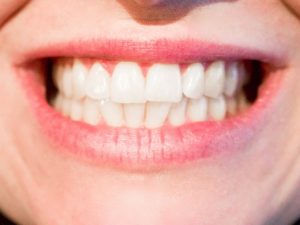If your Mesa Az dentist has diagnosed you with gum disease, you should be alarmed. Periodontal disease can either be a simple inflammation of the gum or a serious condition that leads to severe damage of the bone and soft tissue that support your teeth. In serious cases, affected persons experience tooth loss. To understand the available treatment options for gum disease, it is important to review its causes, variations, and main symptoms.
What Causes Gum Disease
The mouth is filled with bacteria. When these bacteria combine with mucus and other elements, they form a colorless, sticky plaque. Flossing and brushing helps to eliminate plaque. When you do not clean out plague, it hardens forming tartar that is difficult to remove through brushing. Tartar can only be removed by professional cleaning.
Variations of Gum Disease
Gingivitis
The longer tartar and plaque remain on your teeth, the more risky it is. Bacteria cause an inflammation of the gums, a condition known as gingivitis. A person with gingivitis has red swollen gums that bleed easily. Gingivitis can be reversed through daily flossing and brushing, and regular professional cleaning. This mild form of gum disease does not result in the loss of tissue or bone that support the teeth.
Periodontitis
If gingivitis remains untreated, it is likely to advance to a condition called periodontitis. Persons suffering from periodontitis experience gums that pull away from their teeth forming spaces (pockets) that are infected. The body fights off the bacteria as the plaque continues to spread along the gum line. The body’s response to infection and the bacterial toxins both contribute to the deterioration of the connective tissue and bone that support the teeth. If left untreated, the gums, tissue, and bone that hold the teeth in place are destroyed resulting in tooth loss.
Symptoms of Gum Disease
Some of the common symptoms of gum disease are:
Persistent bad breath
Red swollen gums
Bleeding gums
Sensitive and loose teeth
Painful chewing
Longer appearing teeth or receding gums
Treatment Options for Gum Disease
The aim of gum disease treatment is to contain the infection. The treatment used will vary depending on the seriousness of your gum disease. Any treatment requires the patient to observe proper oral hygiene. The doctor may further advice the patient to change certain behaviors like smoking.
Deep Cleaning
The dentist gets rid of the plaque through two cleaning procedures: scaling and root planning. In scaling, the dentist scraps off tartar on the patient’s gum line. In root planning, the dentist removes rough spots on the patient’s tooth root where germs are fond of settling, and this removes bacteria that cause the disease. In many cases, a laser is used for removing plaque and tartar. The procedure involves less discomfort, swelling, and bleeding when compared to conventional deep cleaning methods.
Medications
 There are some medications that may be used alongside scaling and root planning. Some of the medications used are:
There are some medications that may be used alongside scaling and root planning. Some of the medications used are:
Antimicrobial mouthrinse
Antiseptic chip
Antibiotic gel
Enzyme suppressant
Oral antibiotics
Antibiotic microspheres
Surgical Treatments
Flap Surgery: Surgery is necessary if deep pockets and inflammation remain after treatment using medications and deep cleaning. A flap surgery involves lifting a patient’s gums back and removing the tartar. The gums are later placed back so that the tissue fits well around the tooth.
Bone and Tissue Grafts: The dentist may recommend procedures to help regenerate gum or bone tissue that has been lost to periodontitis. In bone grafting, a synthetic bone is fixed around the area that experienced bone loss to help promote bone growth. Another technique used with bone grafting is guided regeneration of tissue. In this operation, a mesh-like object is place between the gum and bone tissue. This procedure prevents the gum tissue from growing in the bone area. In cases where the patient has lost gum tissue, the dentist may recommend a grafting of soft tissue. In this procedure, some soft tissue from one part of the mouth is used to cover the exposed roots.
If you are experiencing any of the above-mentioned symptoms of gum disease, it is important that you consult Curtis Family Dental for a general checkup. With many years of experience in professional cleaning of teeth and many alternatives to gum treatment, Curtis Family is your best option to fighting gum disease and restoring the health of your mouth.



